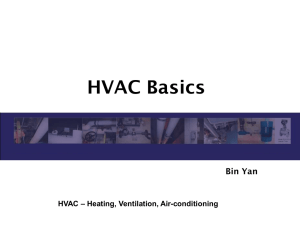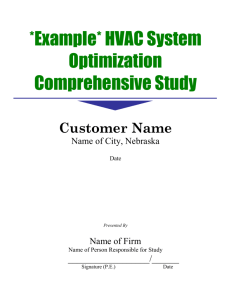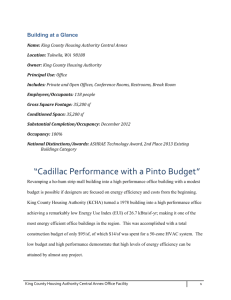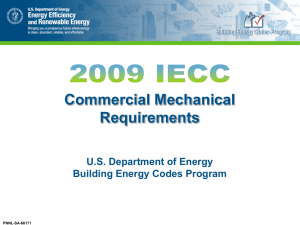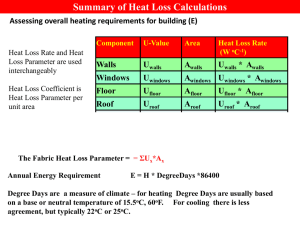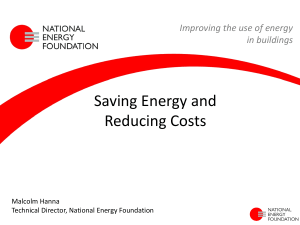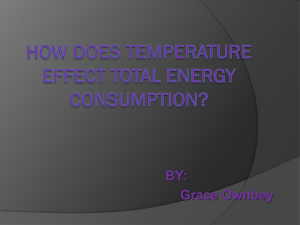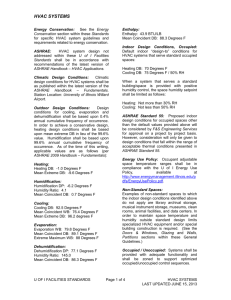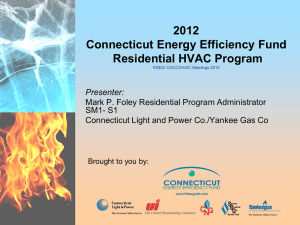Chapter 21
advertisement
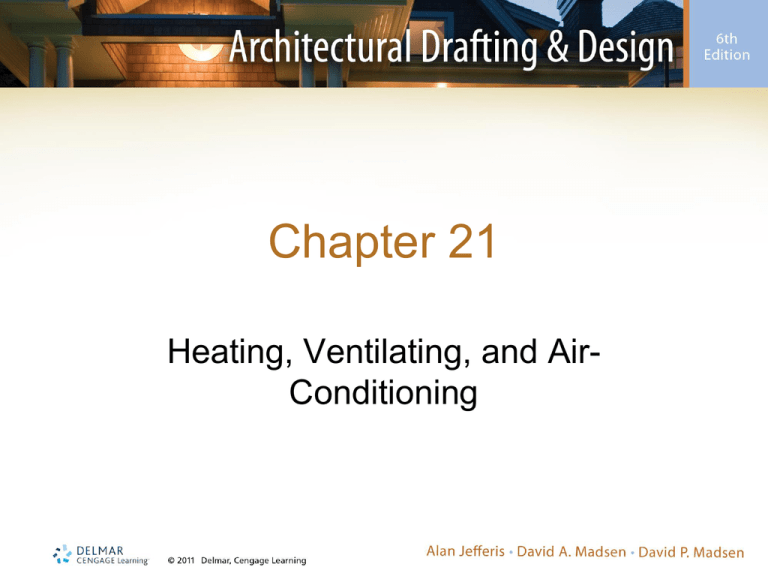
Chapter 21 Heating, Ventilating, and AirConditioning Introduction • Heating, ventilating, and air-conditioning (HVAC) – Heating and air-conditioning equipment, and systems found in a building • Also referred to as the mechanical system • Regulates temperature – International Residential Code (IRC) • Requires a heating unit in any residence built in an area where winter design temperature is below 60° Central Forced-Air Systems Forced-Air Heating Plans • Complete forced-air heating plans show: – Size, location, and number of British thermal units (Btu) dispersed from warm-air supplies – Location and size of cold-air return – Location, type, and output of furnace • Providing duct space (i.e., chase) – When ducted heating and cooling systems are used, duct location becomes important Hot Water Systems • Water is heated in an oil- or gas-fired boiler – Then circulated through pipes to radiators or convectors Heat Pump Systems • Forced-air central heating and cooling system – Compressor and circulating refrigerant system Zone Control Systems • One heater and one thermostat per room – No duct work – Only heaters in occupied rooms need to be turned on • Types: – Baseboard – Fan heaters – Split systems Radiant Heat • Radiant heating and cooling systems – Control surface temperatures – Minimize excessive air motion – Annual operating cost savings of 20% to 50% • Lower thermostat settings • Superior, cost-effective design Thermostats • Automatic mechanism for controlling heating or cooling by a central or zonal system – Location is important Heat Recovery and Ventilation • Uses a counter flow heat exchanger between inbound and outbound airflow – Air pollutants • Principle reason for installation – Air-to-air heat exchangers • Pulls polluted, stale, warm air from the space and transfers heat in that air to fresh, cold air being pulled into the space Exhaust Systems: Code Requirements • Exhausts are part of the HVAC system – Exhaust systems are required to remove odors, steam, moisture, and pollutants • Refer to the text for basic general code requirements Central Vacuum Systems • Advantages: – Affordability and increased home resale value – Removal of dirt too heavy for most units – Exhaust of dirt and dust out of the space – No motor unit or electric cords – Less noise – Savings in cleaning time – Ability to vary vacuum pressure HVAC Symbols • More than a hundred HVAC symbols can be used in heating plans – Only a few are typically used in residential HVAC • Refer to Figure 21-13 for common HVAC symbols Universal HVAC Design • Issues to consider in designing a building for people with disabilities – Thermostats • Placement • Available in Braille, large print, or with clicks – Heating systems • Electric forced-air furnaces or heat pumps may be preferred • Consider placement, allergies, filters, and timers HVAC Code Requirements • National Energy Conservation Code regulates the design and construction of: – Exterior envelope and selection of HVAC – Service water heating – Electrical distribution – Illuminating systems and required equipment • Refer to the text for general code requirements Thermal Calculations for Heating/Cooling • Necessary to establish the correct: – Furnace – Ductwork – Supply – Return register specifications • Historical primary use – Calculate design heat load of houses to estimate gas and oil heating systems size Thermal Calculations for Heating/Cooling (cont’d.) • HVAC terminology: – Btu – Compass point – Duct loss – Grains – Heat transfer multiplier – Indoor temperature – Indoor wet bulb – Infiltration – Internal heat gain – Latent load – Mechanical ventilation Thermal Calculations for Heating/Cooling (cont’d.) • HVAC terminology (cont’d.): – Outdoor temperature – Outdoor wet bulb – R-factor – Sensible load calculations – Temperature difference – U-factor Steps in Filling Out the Residential Heating Data Sheet • Completed residential heating data sheet – Two-page data sheet – Divided into several categories – Calculations result in total heat loss – Refer to the text for steps to complete the form • Also refer to Figures 21-14 and 21-15 Steps in Filling Out the Residential Cooling Data Sheet • Completed residential cooling data sheet – Two-page data sheet – Divided into several categories – Calculations result in total sensible and latent heat gain – Refer to the text for steps to complete the form • Also refer to Figures 21-14 and 21-16 HVAC Drawings • Drawings for the HVAC system show: – Size and location of all equipment, ductwork, and components – Use accurate symbols, specifications, notes, and schedules • Form the basis of contract requirements for construction HVAC Drawings (cont’d.) • Include: – Single-and double-line HVAC plans – Detail drawings – Section drawings – HVAC schedules – HVAC pictorial drawings HVAC Plan Drawing Checklist • Refer to the text for a HVAC drawing checklist – Check off the items in the list as you work on the HVAC plan • Ensures all the necessary items are included

